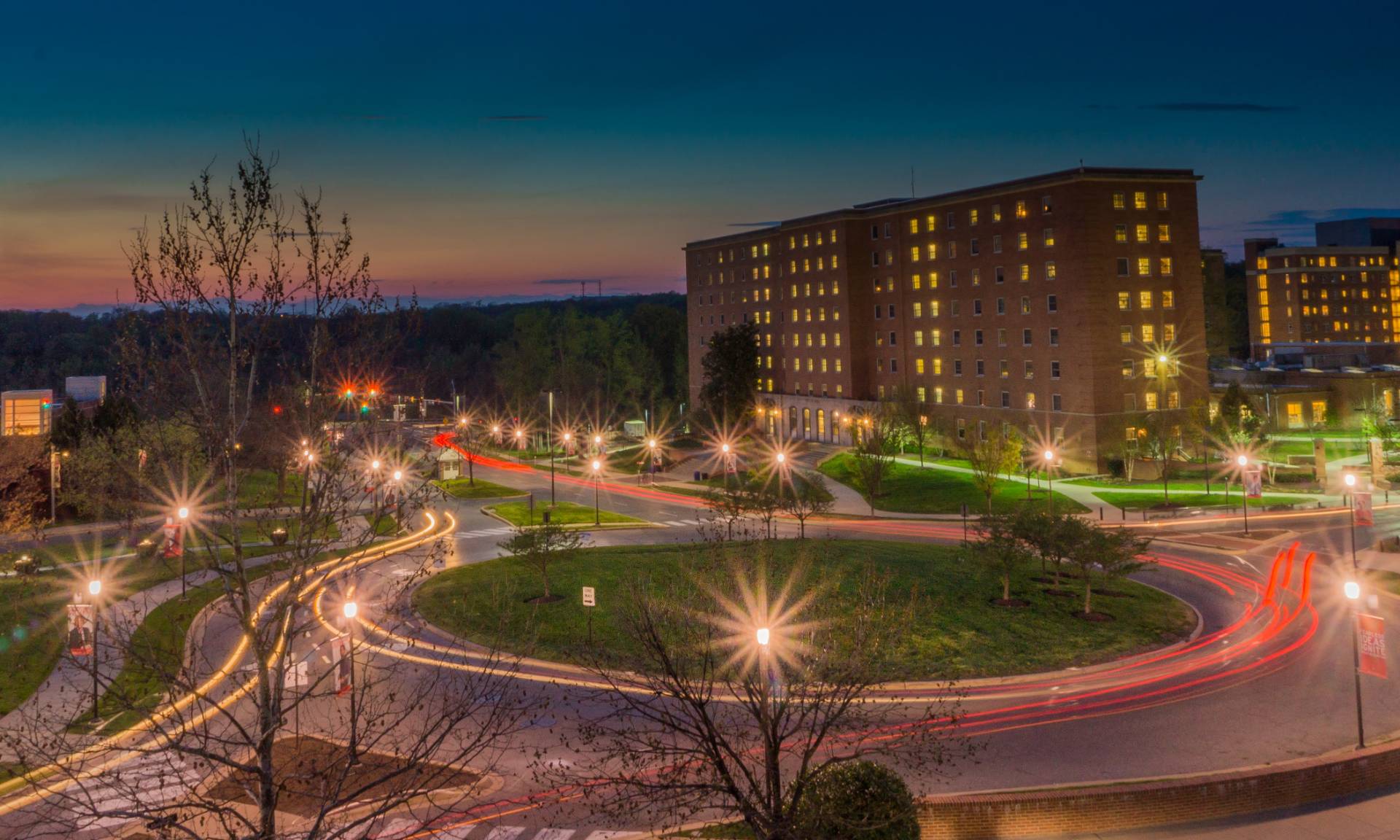What University Energy Managers are saying about the impact of COVID-19 by Simon Burgess, Siemens
- Energy consumption falls by at least a third, “a normal day now is like Christmas”
- Uni’s gas prices double
- Huge effort to get ready for new term with lots of challenges like ventilation
- “Everything we’ve been doing for years has been turned on its head”
The International Energy Agency (IEA) called Covid-19 the “biggest shock to the global energy system in more than seven decades”; precipitating a fall in energy demand that would “dwarf the impact of the 2008 financial crisis and result in a record annual decline in carbon emissions of almost 8 per cent”.
Universities own and operate energy systems of such scale and complexity that they closely resemble an energy system of a small town. Many people would be surprised at just how big the higher education (HE) sector is in terms of energy. Last year for instance universities consumed more electricity than the iron and steel sector, and they produced more emissions than the ceramics industry.
The 100-odd energy managers that work in HE have a unique perspective on how Covid has impacted universities. They have data from meters, control systems and buildings; but they also have practical experience of locking down the campus, and the complications this presents.
I spoke to five energy managers to see how the crisis had affected them, and how they’re planning for September.
Energy demand down, but not as much as you’d think
The five energy managers I spoke to all saw a big decline in energy consumption across their estates. On average they saw a 30% reduction in electricity and a 50% reduction in gas. “From a power perspective, a normal day in the lockdown is like a Christmas day,” said one.
The fall in demand was not evenly spread across each building type. “In teaching, we saw a much larger drop, but in accommodation it was less dramatic because we still have a few people living on campus, so the whole building was being heated or cooled.”
But the fall in consumption has left many of the energy managers I spoke to feeling underwhelmed. “I’ve been surprised by how much equipment is still running in buildings, despite no-one being in them.” This was echoed by another energy manager who said “it certainly demonstrates what your baseload is. We are still consuming 1MW electricity at any one time despite there being no users!”
With the buildings being empty, some energy managers are using Covid as a chance to consider what impact energy efficiency can have. “Covid-19 shows you that users can’t change that much. Energy efficiency is great but there comes a point where you need fundamental changes like a major renewables project.” This is a sentiment many others shared. “I’ve been an energy manager for 20 years,” one remarked, “and in that time I’ve never made a permanent impact on carbon from energy efficiency interventions. It has only come with a major renewables project.”

So how do you switch off a university?
Turns out there isn’t a big red button. The energy managers I spoke to were having to work through a series of challenges to switch off equipment on their estates. All of them shared the common ambition of reducing cost, but the practicalities of shutting down a university aren’t straightforward. “We had issues actually locking the estate down. Many buildings are still under lock and key, so it was a laborious task. Also, there are non-estates staff like academics who have keys, so we didn’t know if someone was in a building or not. This was a big problem both for safety, and in terms of whether the building needed heating and lighting or not.”
Most of the group said their BMS (Building Management System) had been a vital tool in avoiding unnecessary energy use and switching equipment off remotely. I asked them who they thought had the most vital job during Covid. The energy managers all agreed. “The BMS Engineer,” they said, had been “supremely important.”
But the BMS isn’t a panacea. “We’ve done everything from a BMS point of view, but there is a limit to what it can control,” was a sentiment shared by the group. Many systems within buildings are not controlled by the BMS so estates staff have had to walk the corridors to switch off lights and devices or investigate exceptions in energy reports. And not every university has a fancy new BMS with zillions of sensors. “If you’ve already got a good BMS and energy management system, Covid-19 is a great opportunity. But if you don’t have these it is a big problem.” Energy managers reeled at the number of things that they discovered on site walkarounds. “We noticed there were computers left on in the library. Why was this? Is it a technology issue or are we lacking good processes?”
Universities are reacting and adapting really well
Most of the universities seem to have embraced the crisis and are demonstrating real adaptability. “We’ve been forced to become more agile. Before the crisis we thought it would take two years to transition to Office 365, but we’ve just completed it in two days.”
As you’d expect all the energy managers and estates staff I spoke to are preparing extensively for September. One university has conceived 16 different scenarios with varying student numbers and space regulations. All 16 showed a major reduction in revenue and a big increase in remote teaching with the only contact time being in small group seminars.
One thing seems to be certain about the future – many university estates will get smaller. “We see Covid-19 as a catalyst for something that has been moving slowly for years. We hold 25% excess estate, we didn’t utilise our existing buildings as it was, and Covid has put this in the spotlight.”
How estates are gearing up for the new term
“It’s like everything we’ve been taught, everything we’ve been practicing for years has been thrown out of the window,” was how one energy manager described it. He, like the others I spoke to, had thrown the rule book in the bin as he manually overrode control systems and set points that were designed to minimise energy use.
Take the ventilation system as an example. Universities are now adapting to guidance from CIBSE and REHVA on how to ventilate buildings in readiness for September. These include some major changes, such as venting a building for two hours before and after it opens/closes and running ventilation systems at full power continuously. Another rule is that only fresh air can now be used to ventilate a building, meaning no thermal recovery (usually, hot or cold air would be continuously recirculated around the building, so the energy isn’t wasted). This equipment is energy hungry and come winter, buildings will be sucking air in at say 2°C, heating it to 20°C, then expelling that warm air back into the atmosphere, which of course means added costs (not to mention carbon).
“Our gas price has doubled during Covid”
Some universities have been stung by their energy suppliers, with the price for each unit of gas doubling to around 6p/kWh. This is because they took out long-term contracts with fixed prices, but to get the best price they had to guarantee a minimum purchase volume. With demand falling, several universities I spoke to had not been able to meet their obligations and so the remaining surplus had to be sold back to the market at a loss.
To understand this problem, I spoke to an energy market expert within Siemens. He said this was a double-sided problem: “The gas market is fundamentally weak at the moment, irrespective of Covid, and we have seen multi-year lows in prices.” The crisis just added greater uncertainty, and global gas demand is now even lower than before. “Because of the way the gas market is trading currently, it’s likely some universities will be losing money. If they were forecasting to use 1000 therms of gas in a month but only used 500, they may be liable for the unused capacity they bought. If they fixed at 40p/Therm and the market is now trading at half that price, they will have to cover the difference.”
Some universities are in the middle of multi-year contracts, and a second peak or deep recession could send gas prices tumbling even further. “What would you do in their shoes?” I asked him. “The first thing I’d do is check their contract and weigh up all the options. These types of contracts are very complex,” he said, “so you need to go through it very carefully and then start a discussion with your energy supplier.”
What will change as a result of Covid?
Every energy manager I spoke to said they expected September to bring changes in working practices for staff and students. These changes present opportunities for estates teams to adopt new technology. “I think working patterns will change – more teaching and working remotely – these are new drivers for things like additional sensors in a building.”
As we have heard, many estates teams had limited ability to remotely control systems and devices across the estate. This will lead to changes in the way universities procure new buildings. The design of controls will be different: “We always used to ask for integration of systems like lighting. We always asked for that, but it was value engineered out. I think this will change in the future.”
One energy manager told me: “When we issue a procurement spec for new builds and refurbs, I will want them to include technology that gives me more granularity of data and better controls. I want a supervisory control system that brings all traditional building services into one place e.g. lighting, heating as well as occupancy and ventilation.
“I want all local control systems to be able to communicate with and take instructions from the supervisory system. I don’t necessarily want to be able to change the logic of the local controller, but I do want to be able to switch all lights off in a building remotely, for instance.”
About the Author: Simon works for engineering company Siemens and is supporting several universities in their transition to net zero.


